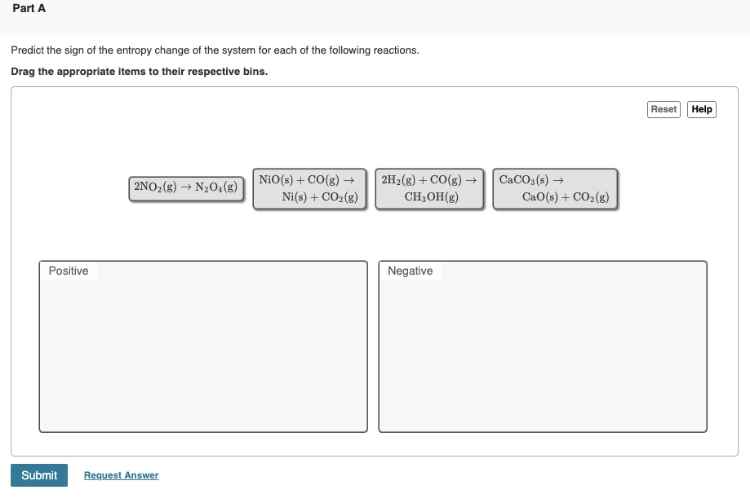In this blog we are going to tell you about entropy change, so read this blog carefully to get the complete information.
Positive-Negative
Ag+(aq)+Br−(aq)→AgBr(s)
CaCO3(s)→CaO(s)+CO2(g)
2NH3(g)→N2(g)+3H2(g)
2Na(s)+Cl2(g)→2NaCl(s)
C3H8(g)+5O2(g)→3CO2(g)+4H2O(g)
I2(s)→I2(g)
Answer: Ag+(aq)+Br−(aq)→AgBr(s) Negative CaCO3(s)→CaO(s)+CO2(g)2 Positive NH3(g)→N2(g)+3H2(g) Positive 2Na(s)+Cl2(g)→2NaCl(s) Negative C3H8(g)+5O2(g)→3CO2(g)+4H2O(g) Positive
I2(s)→I2(g) Positive
RELATED – What’s Bravo 381 Invisible Gator?: Know all the Updates about Bravo 381 Invisible Gator!
Answer Explanation:
To solve this problem, you have to remember that the entropy of a gas is higher than that of a liquid which in turn is higher than the solid. So in comparing the reactants and products look for the changes in the state of the reactants and products which means which of these are solid, liquid, or gas. Besides this, we also have to look for the increase or decrease of moles of each state depending on their balanced chemical reaction. In the equation, Ag+(aq)+Br−(aq)→AgBr(s) the product is a single solid whereas the reactants are two species in the solution so the change in entropy is negative. In the other equation, CaCO3(s)→CaO(s)+CO2(g)2 the reactant is a solid whereas the products are a solid and a gas product so the change in entropy is positive. Similarly in the equation, NH3(g)→N2(g)+3H2(g) we have 4 mol gas as a product so starting from 1 mol reactant gas the entropy is increased. In the equation, 2Na(s)+Cl2(g)→2NaCl(s), 2 mol solid Na and 1 mol Cl₂ gas are converted into 2 mol solid NaCl so the entropy has decreased. In the equation, C3H8(g)+5O2(g)→3CO2(g)+4H2O(g), the product has 7 mol of gas while the reactant has 6 mol of gas so the entropy is increased. In the last equation, I2(s)→I2(g), 1 mol of solid in the reactant goes into 1 mol of gas making the change in the entropy higher.
Conclusion
We hope that you understood the concept of entropy and got the question along with the answers and now you can also predict the entropy of other reactions.
We Hope this blog is sufficient enough to provide the information about entropy change. Thanks for reading this blog.
